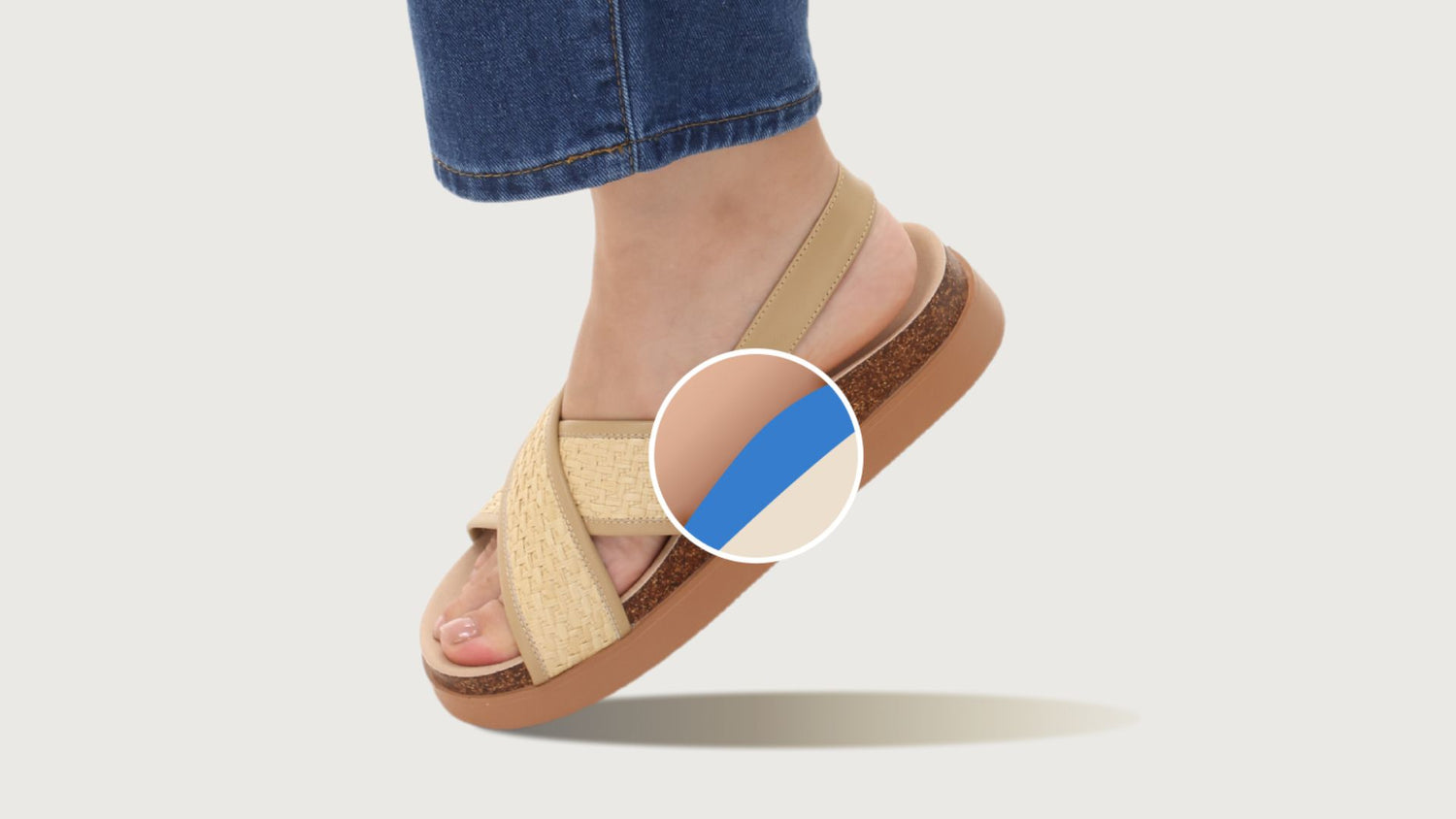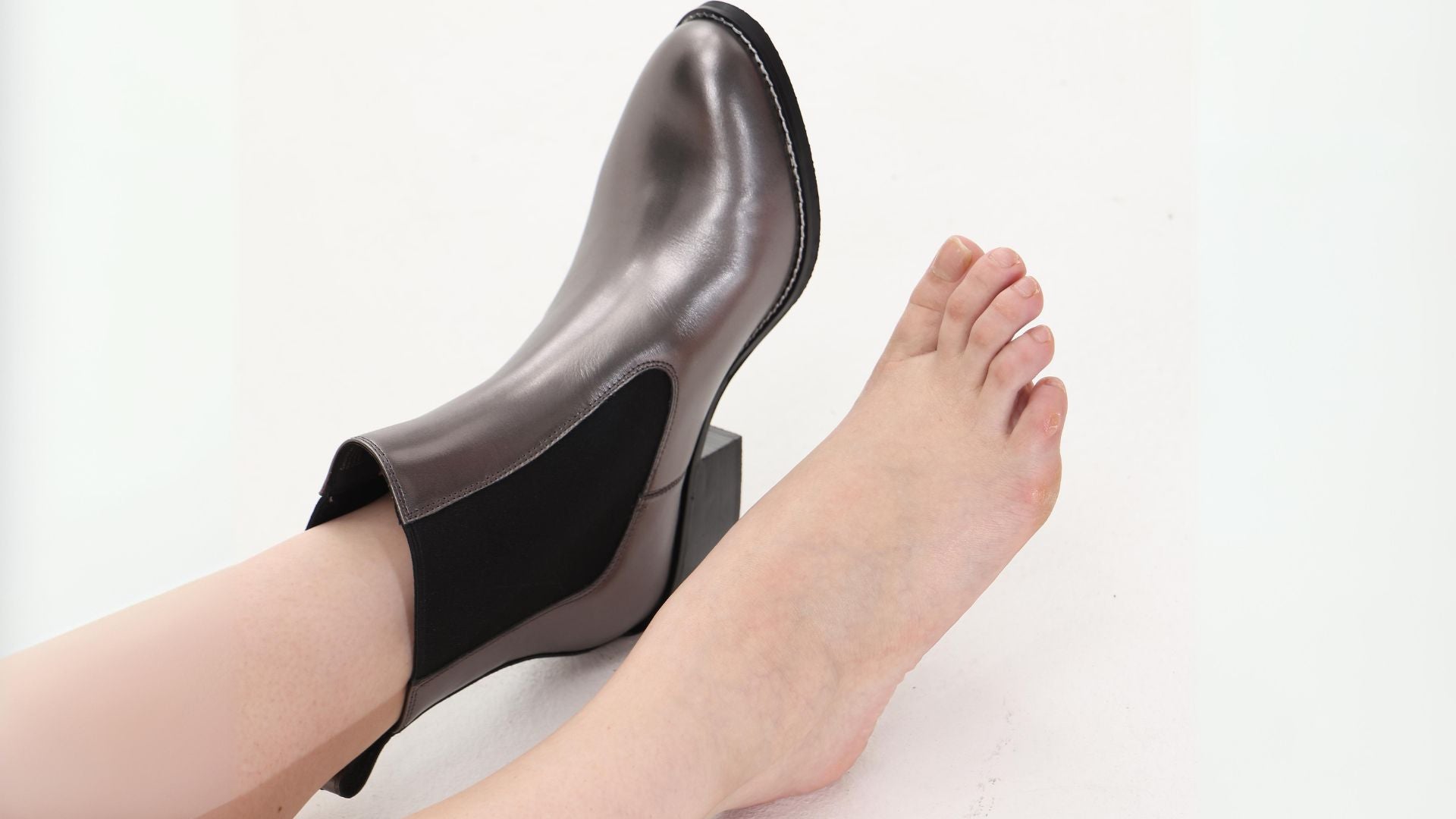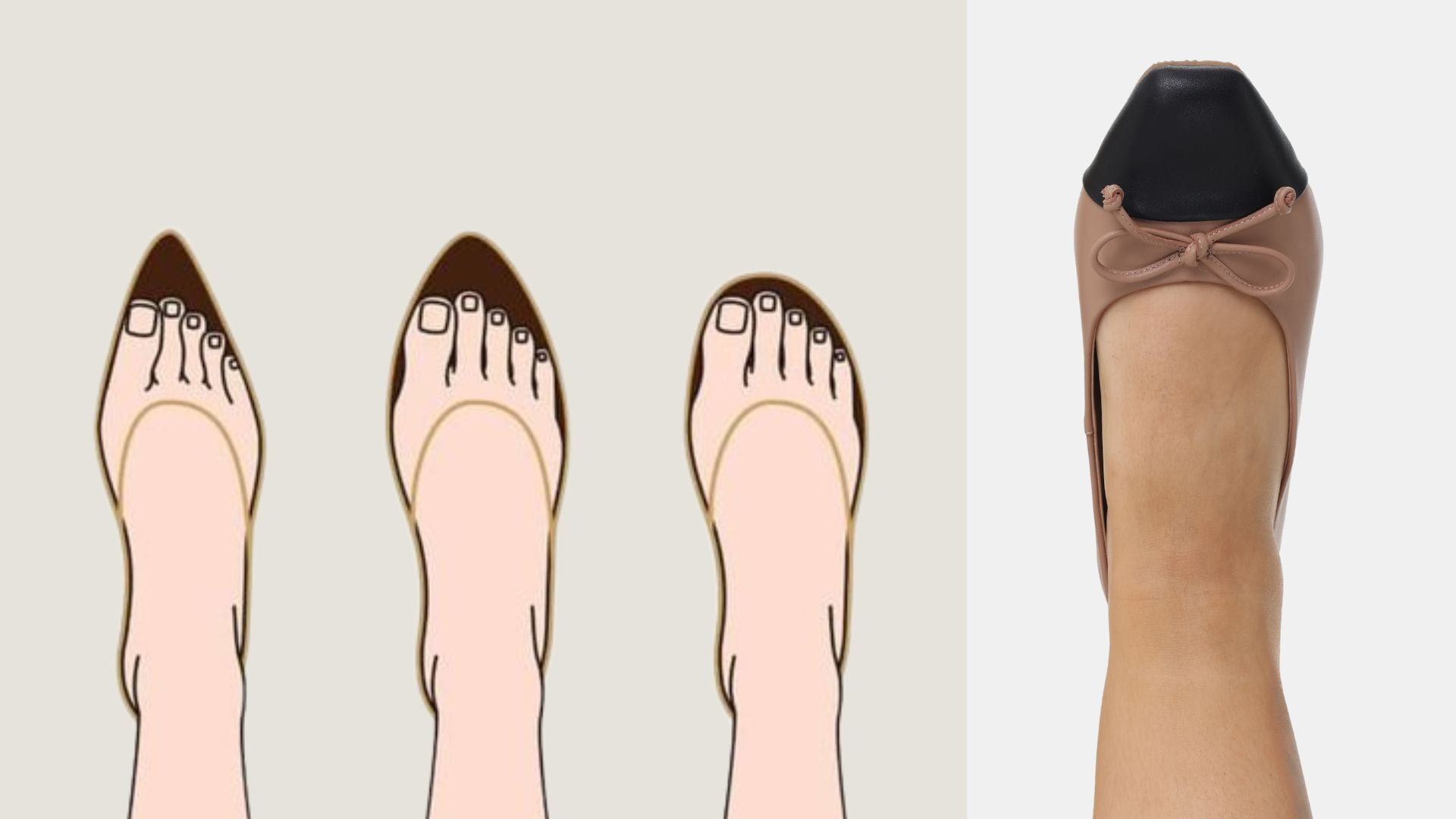Having flat feet means your arches are lower to the ground, and this can often contribute to pain and hurts. Wearing shoes that fit well is very important; for those people with flat feet, it might be beneficial for them to wear wider shoes, as they allow more room inside the shoe, which may lead to better support, and therefore less pain. We are going to discuss what causes flat feet, why choosing the right shoe matters, and how wide shoes can help. We’ll clear up some common questions about whether wide shoes are only for people with flat feet and if narrow shoes could ever be a good choice for you.
What Are Flat Feet?
Flat feet are exactly what the phrase suggests: your feet have flatter arches than usual, and when you stand up, the bottom of your entire foot touches the floor. In other words, the inner section of your foot, that usually seems to have a slight hole in it, is simply filled in.
What Are the Causes of Flat Feet?
Flat feet can be caused by a variety of factors:
- Genetics: Some people just have flat feet naturally, and it runs in the family.
- Development: Most children tend to develop flat feet that, while growing up, often take the shape of arched feet, though not necessarily always.
- Aging: The wear and tear of growing older sometimes causes flat feet due to the weakening of the supporting tissues in the body.
- Injuries: Trauma to the foot, if serious enough to alter or weaken the structure of the foot, can easily cause flat feet.
-
Health Conditions: Most of the health conditions, such as diabetes or obesity, have an impact on flat feet.

What Are the Signs and Impacts of Having Flat Feet?
If you have flat feet, you may feel like your shoes wear out too quickly, or unevenly. It can lead to several noticeable signs and consequences:
- Shoes Wear Down Faster: People with flat feet may have to replace their shoes before the expected time period due to increased wear in them. The shoes are also likely to wear down unevenly, especially on one side, since the way your foot presses down can easily pull to one side.
- Feet Get Tired Easily: You may notice that your feet are more tired than they should be, even after a short walk or just a little while of staying on your feet.
- Discomfort in Multiple Areas: Pain may show up not only in your arches or heels but also travel up into your legs, knees, or back pain because of the additional strain.
- Sometimes No Problems at All: Curiously enough, not everyone with flat feet will experience these issues. Some people go through their daily lives without any associated foot trouble.
- Feet Roll Inwards Too Much: This is known as overpronation, where your feet lean inward a lot when you walk. It's like your ankles are bending toward each other, and it can throw off your balance.
- Leads to Other Issues: Overpronation may cause other problems such as sore ankles, swollen feet at the end of the day, or even problems in other areas of the body that come from walking differently to make up for the flatness in the feet.
Why Is Proper Footwear Essential for Flat Feet?
How Do Shoes Affect Foot Health?
Consider your shoes as the foundation of your daily activities. They can either make or break how your feet feel by the end of the day. Here’s why:
- Protection: Good shoes guard your feet against rough surfaces and sharp objects.
- Support: They help align your feet, ankles, and even hips for better balance and posture.
- Comfort: Well-fitted shoes prevent unnecessary friction that can lead to blisters and calluses.
Choosing the right shoes is important because you wear them for many hours, and they need to provide comfort and support.
What Role Does Shoe Width Play in Comfort?
The width of your shoe is more important than you might think. It's all about giving your feet the space they need:
- Room to Breathe: Shoes that fit well in width offer enough space for air circulation around the toes.
- Proper Fit: They hug your feet just right without squeezing or allowing too much movement.
- Weight Distribution: Especially for flat feet, the right width helps spread out your body weight more evenly across your feet.
Consider shoe width as the amount of room your feet have; if it's too tight, your feet will be uncomfortable, but if there's too much space, your movement won't be as good. You should look for shoes that fit just right and make your feet feel content..
How Can Wide Shoes Help If You Have Flat Feet?
Wide shoes can be incredibly beneficial for people with flat feet for several reasons:
1. Wide Shoes Keep Your Feet Stable
Wide shoes give your feet a larger surface area to stand on. That means your body weight is distributed better and it stabilizes your feet, not putting extra pressure on any particular part of the foot.
2. Wide Shoes Give Your Toes More Room
These shoes give your toes more room to allow for movement that reduces friction and pressure which may make walking, running, or standing uncomfortable and abrase your skin to result in blisters and soreness.
3. Wearing Wide Shoes Can Stop Foot Pain
Wide shoes allow for the shape of your foot while leaving enough room to prevent extreme rolling, which might cause arch pain or plantar fasciitis in people with fallen arches.
4. Good Shoe Fit Helps Keep Your Body in Line
This is because, once your feet have enough room to sit naturally without constriction, your ankles, knees, and hips will align better. This helps avoid some types of joint pain and injuries that come with poor posture.
5. Wide Shoes Can Keep Toes Straight and Healthy
Narrow or tight shoes can be culprits for causing or aggravating certain conditions related to toe deformity, like bunions and hammertoes. Wide shoes allow the toes to stay in their natural position, hence preventing these kinds of problems.
6. Orthotics Fit Well in Wide Shoes
The same goes for many people with flat feet who have to make use of customized orthotics. Wide shoes can be roomy enough to handle orthotics with comfort without sacrificing the full benefit of customized support.
7. Wide Shoes Allow for Better Blood Flow in Your Feet
Shoes that are well-fitting and are wide enough don't impede blood circulation. This lessens the risk of swelling and discomfort related to tight footwear.
8. Wide Shoes Spread Pressure Evenly Across Your Feet
With flat feet, pressure can often shift towards the balls of the feet. A spacious toe box in wide shoes helps distribute this weight more effectively, potentially reducing issues like metatarsalgia, which causes pain in the ball of the foot.

How to Choose the Right Shoes for Flat Feet
When you're on the hunt for the perfect pair of shoes to suit flat feet, it's not just about picking a wide shoe; there are specific features to keep an eye out for that can make a big difference in how comfortable you feel.
1. Shoes with Arch Support Help Ease Flat Feet Discomfort
Even though flat feet have less of a natural arch, wearing shoes with good arch support can help manage discomfort. This feature helps distribute your weight more evenly and can prevent your feet from getting tired too quickly.
- Look for shoes with built-in arch support.
- Check if there’s enough room to add orthotic inserts if needed.
2. Cushioned Soles Are Essential for Foot Comfort
The soles of your feet take a beating every day, so cushioning is key to keep them from feeling sore.
- Choose shoes with soft, thick soles that can absorb impact as you walk or run.
- Ensure that the cushioning doesn't compress too quickly over time.
3. Go for Breathable Shoes to Keep Your Feet Cool and Dry
Your feet need to breathe, just like the rest of you. Shoes made from high-quality, breathable materials will keep your feet cooler and reduce the risk of fungal infections like athlete's foot.
- Opt for shoes made with natural materials like leather or advanced mesh fabrics that allow air flow.
- Avoid plastic or non-breathable synthetic materials that trap moisture.
The right shoes are all about giving you a blend of support, comfort, and quality that suits your unique feet. So when you have flat feet and are looking for wide shoes, these features should be at the top of your checklist.
Common Misconceptions About Wide Shoes
When it comes to wide shoes, there are a few misunderstandings that often come up. Let's clear those up with some straightforward facts.
Are Wide Shoes Only for People with Flat Feet?
It's a common belief that only people with flat feet need wide shoes, but that's not entirely true. Wide shoes can benefit anyone who finds them more comfortable. Here's the deal:
- Foot Shape: Everybody's foot is of different shape and size, and for some wide shoes are simply a better fit irrespective of the arch type.
- Swelling: Those experiencing swelling of the feet also appreciate wide shoes when some days the need for extra room is likely to be experienced.
- Freedom of Movement: Others like the fact that with wide shoes, their toes can move around more, which helps them feel more balanced and sure-footed.
Even though wide shoes are highly recommended for individuals with flat feet, wide shoes are not only designed for such purposes.
Can Narrow Shoes Be Comfortable for Flat Feet?
You may wonder now if a person with flat feet could be comfortable ever in narrow shoes. It is tricky, but here is what you should know:
- Proper Fit: If a shoe is well-designed and comfortably fits the length and height of the foot, even a person who has been affected with flat feet may find a narrower shoe comfortable.
- Custom Orthotics: With the use of custom-made orthotics designed to support flat arches, some narrower shoes might become suitable.
- Material and Design: Flexible materials and smart design can also make a narrower shoe more comfortable for someone with flat feet.
However, it's generally a good idea for those with flat feet to avoid very narrow shoes, as they can often lead to discomfort and foot health issues. It is simply finding that balance where the shoe complements the shape of the foot without causing pain or inhibiting the full natural range of motion.

Can Wearing Wide Shoes Help Prevent Foot Pain?
Absolutely, stepping into a pair of wide shoes can be like giving your feet a big sigh of relief. If you've ever taken your foot and pushed it into a shoe that is too narrow, you realize the rubbing and pinching that occurs are not only uncomfortable, but in reality can cause a lot of pain. When shoes are wide, there's more width across the toes. This means they will not be squished, and that makes walking feel better and cuts pain down. Wide shoes let your feet line up the right way with your legs, helping keep pain away. Plus, when your shoes aren't tight, your blood flows better; this helps to keep your feet from swelling and hurting. Also, wide shoes displace weight in such a way that your ankles, knees, and hips will not ache that much. So, if you have wide feet or problems like flat feet, bunions, or hammertoes, getting into a pair of wide shoes might just make the whole day run easier without foot pain.
Less Foot Pain, More Room — Choose Wide Shoes Today
Choosing wide shoes is good for wide feet. They offer extra space for your toes, ensure your feet are positioned correctly, and promote better blood circulation, which all contribute to reducing foot pain. Comfortable feet are less prone to problems. Opting for wide shoes gives your feet the ample space they need, leading to overall better comfort.



